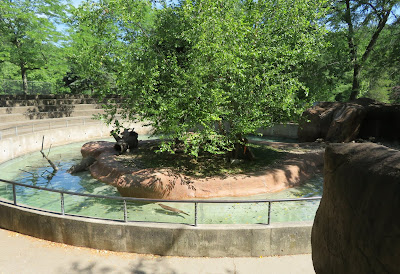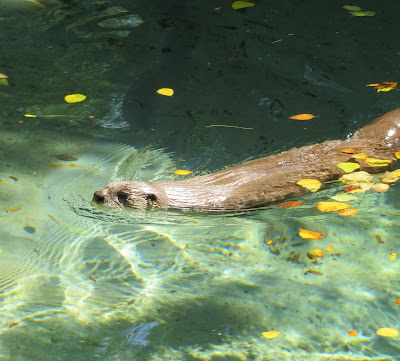 Another Double Zoo Roadtrip. Two that I had never been to this time and both in Pennsylvania. The first was furthest away. The Lehigh Valley Zoo is a medium sized zoo northwest of Philadelphia. The establishment started just after the turn of the 20th century as a private game preserve. In 1935 public entities took the preserve over and in 1974 the started with the construction a children's petting zoo. It has since grown to inhabit nearly 30 acres, received AZA accreditation, and has successfully participated in a handful of SSP (Species Survival Plans) for some endangered and critically endangered animals. I would tell you that I did not know what to expect, but I didn't have super high hopes. May I admit, I was wrong? It is a truly charming zoo with a clean and well maintained physical plant and lots of opportunities to see animals in well appointed and well maintained habitats. Room for improvement? Always, but nothing left me feeling sad. I would happily return again.
Another Double Zoo Roadtrip. Two that I had never been to this time and both in Pennsylvania. The first was furthest away. The Lehigh Valley Zoo is a medium sized zoo northwest of Philadelphia. The establishment started just after the turn of the 20th century as a private game preserve. In 1935 public entities took the preserve over and in 1974 the started with the construction a children's petting zoo. It has since grown to inhabit nearly 30 acres, received AZA accreditation, and has successfully participated in a handful of SSP (Species Survival Plans) for some endangered and critically endangered animals. I would tell you that I did not know what to expect, but I didn't have super high hopes. May I admit, I was wrong? It is a truly charming zoo with a clean and well maintained physical plant and lots of opportunities to see animals in well appointed and well maintained habitats. Room for improvement? Always, but nothing left me feeling sad. I would happily return again. Because I took extensive photos, I will be presenting my visit in five parts. The first takes us from the entrance where you will first encounter their Africa Penguin colony and then to left in a loop around the zoo to the Herpetarium and North American Otter habitat.
Because I took extensive photos, I will be presenting my visit in five parts. The first takes us from the entrance where you will first encounter their Africa Penguin colony and then to left in a loop around the zoo to the Herpetarium and North American Otter habitat.I believe that it goes without saying that I am a great fan of this little species. Perhaps what I should reveal is that no doubt one of the reasons is that they are they only species of penguins that I have actually encountered in the wild. On my stay in South Africa, I drove with a friend down past the Cape of Good Hope and onto the east along the coast. We chanced to spend some time hiking around a cove and there they were in all their formal attire exploring among the rocks nearby. One of the Species Survival Programs that this zoo participates in is for this species.
The habitat is not as intriguing as the one at my home zoo (The Maryland Zoo), but it is large and allows them to really swim as they would in the wild.
Their Herpetarium is located in this building and is home to a dozen habitats with probably 16 to 18 species of Reptiles and Amphibians. For a small zoo, the artistry taken in creating the habitats was really very impressive.
Gila Monster
Northern Copperhead
Timber Rattlesnake
You can get a sense here of the generous size of the habitats.
Green Monitor Lizard
 The habitat for the North American River Otters is a large mostly doughnut pool with an island in the middle. Around the edges is a concrete seating amphitheatre. I assume that they use this space as part of their education programs, it would easily sit a hundred people.
The habitat for the North American River Otters is a large mostly doughnut pool with an island in the middle. Around the edges is a concrete seating amphitheatre. I assume that they use this space as part of their education programs, it would easily sit a hundred people.












No comments:
Post a Comment